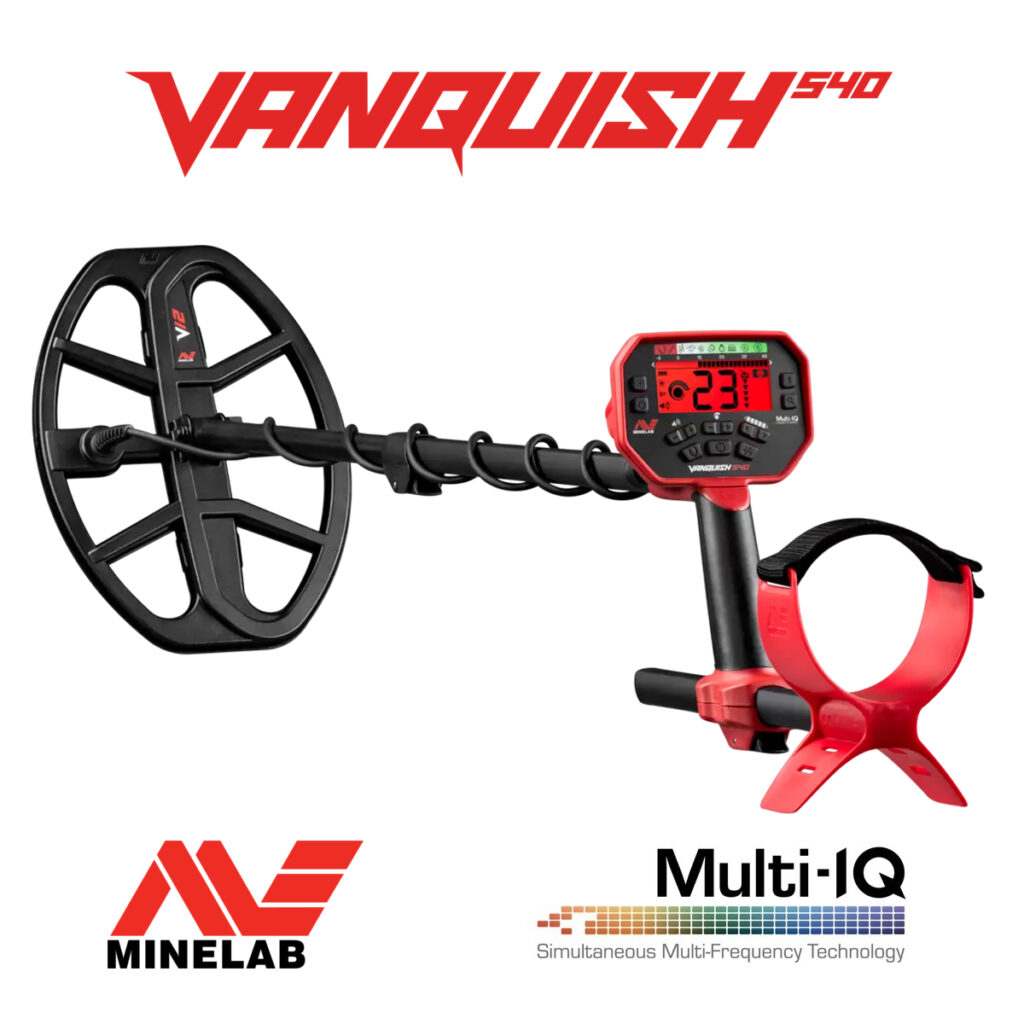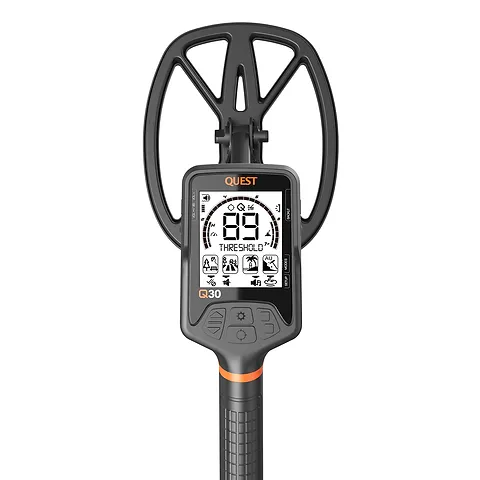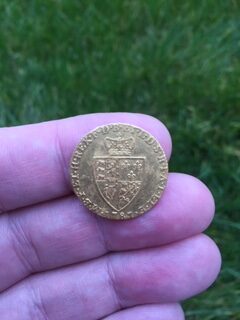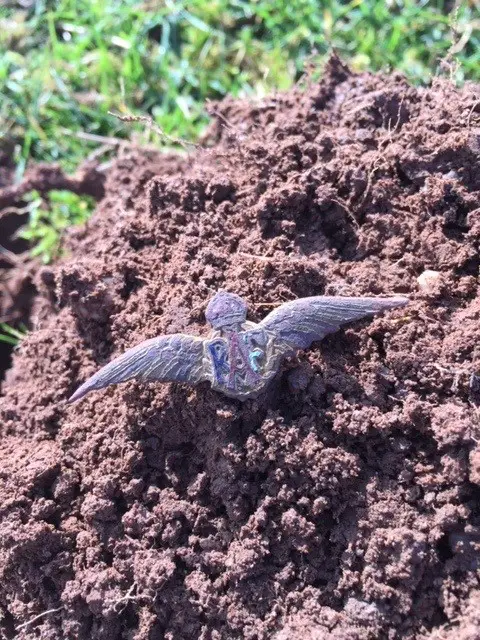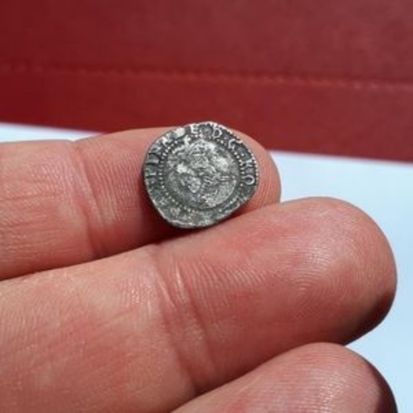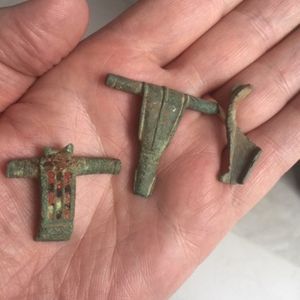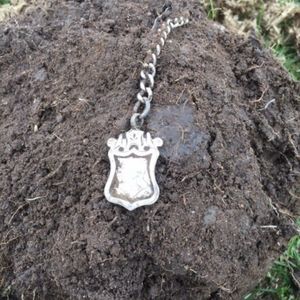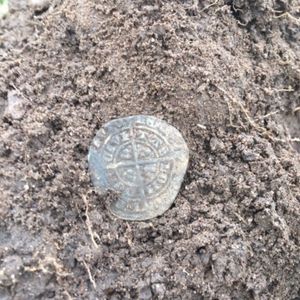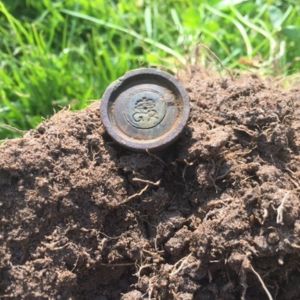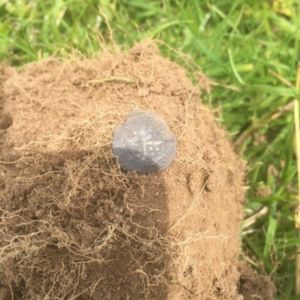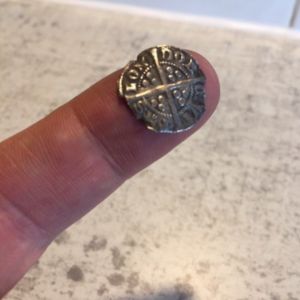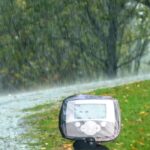The best metal detector choices under £300
If you are new to the hobby of metal detecting or are thinking about taking this fantastic hobby on, you are here because you are doing the most vital task I could ever recommend.
You are carrying out research on metal detecting, gaining valued information about the hobby and also determining what kind of metal detector you can expect to obtain within your budget.
If you are in this position and are looking into the hobby, I have an additional article on metal detecting for beginners here.
Finding the best metal detector under £300 can be a minefield. The whole reason for me starting this website and blog was that I was increasingly frustrated and borderline angry with the content being supplied in other articles around the subject of choosing a detector.

I found that the metal detectors they were, (and still are) promoting are either out of date and obsolete, cheap and ineffective, over £300 or just not appropriate.
They were even suggesting far too many detectors making it even more confusing. This was enough for me to write this article and only recommend the very best metal detectors for this price range.
I have a short intro of me in my About page but I have been detecting for a long time now and have used many detectors over the years. I’ve also made many bad choices in the early days which I want you guys to avoid, hence the article.
If your budget is under £300, I have another article that is worth a read on finding the best beginners detector for around £100 here.
The one thing to remember here is that as with most things in life, you get what you pay for. This would be the same for any hobby you were exploring.
Looking for the best metal detector under £300 is a great entry point and a decent sum. This will move you from a beginner to an intermediate or serious enthusiast.
In this article, I am going to show you my top 3 metal detector choices which in my mind, and experience are some of the best for sub £300.
I’ll leak some information early and say that there is one outright winner in which the technology inside it is unbelievable for £300!……the Minelab Vanquish 440.
What features should you look for?
Many settings and features on metal detectors can be termed as “bells & whistles” but there are some features that will enable a metal detector to operate much better.
As a general rule, the more you spend, the more features and adjustability you get. You usually find this as you move through a range from the typically the entry level models to the top of the line models.
I also have another useful article explaining metal detector settings here.
Operational features
The operational features will help a metal detector perform better. These can include a Ground Balance feature. This will help the detector cope with mineralised ground and tough wet beach conditions.
In short, mineralised soil can present itself to look like one massive target to a metal detector.
An adjustable ground balance feature will perform some complicated maths after scanning the ground and prevent this happening by basically subtracting it and resetting a baseline.

It will also help your detector hunt deeper. All metal detectors essentially have a ground balance.
The lower end detectors will have their ground balance fixed at the factory to perform on most soils.
On higher end machines, this function is adjustable. This is especially relevant if you wish to beach hunt regularly.
Wet sand can be almost undetectable with the incorrect metal detector.
The ability to “Noise Cancel” is also an important feature. A metal detector works by creating an electromagnetic field around the search coil which projects into ground.
This electromagnetic field is what is described as “balanced”. When it is passed over a metal target, the field becomes “unbalanced” which is how the detector knows there is a target underneath it.
As you can imagine, in the modern world, there can be many sources of electromagnetic interference that could effect a metal detectors performance.
These could be mobile phone transmitters, overhead or underground power lines or even the mobile phone in your pocket!

Having the feature to Noise Cancel allows a metal detector to “sniff” the air and scan it.
It can then change the channel it uses to the one with the least amount of interference or noise.
This can seriously quieten your detector allowing you to hear the more faint, deeper targets you may come across.
The coil type, albeit not really a feature but more specification is really important. The size and type can have a massive effect on performance. This relates to if a coil is of a “DD” type or a “Concentric” type.
The type you really want to source is the DD type. This is not to say that Concentric coils are bad, far from it. It’s just that they operate differently.
Coil types are too much to explain at this point however I have an in depth article on metal detector coil types here.
Finally, the frequency a metal detector operates on is also vitally important. A metal detectors operating frequency will determine its hunting characteristics and the targets its best suited for.
The subject of metal detecting frequencies is also a bit too much for the scope of this article but it gets covered in my article on coils as mentioned above and I do have another article on metal detector depth here.
In a nutshell, metal detectors, depending on the choice of manufacturer will operate on a specific frequency. Some will be low, typically 3 or 5Khz.
Some will be higher, typically 18Khz and some will be in the middle, something like 8 to 12Khz.

Frequencies have a bearing on how deep they penetrate the soil and the reactiveness to certain metal types and sizes.
Lower frequencies penetrate the ground deeper and love bigger, thicker targets but are less sensitive to smaller, thinner targets.
Higher frequencies penetrate the ground less, love smaller, thinner targets but are less sensitive to deeper, thicker targets.
Lower frequencies also recognise iron better than higher frequencies.
Wouldn’t it be great if you could have a metal detector that can operate over several frequencies simultaneously giving you the benefits of everything!
Well you can!…. Multi frequency technology is now here and has opened up a world of possibilities!
It’s a big topic so take a look at my article on multi frequency technology here.
Operational features sum up
So, just to recap, key features you want to look for are an adjustable ground balance, a noise cancel feature, preferably a DD coil with a minimum of a 10 inch diameter and multi frequency technology if you can get it.
Top 5 best metal detectors under £300
No.1 – Minelab Vanquish 440

What’s great:
Multi Frequency technology
10 inch DD coil
Automatic noise cancelling feature
What could be better:
Bluetooth headphones & Iron volume only available on the 540 model
The Minelab Vanquish range has undoubtably taken the detecting world by storm. Coming from Minelab, you know that the history and dedication to research & development doesn’t stop.
Minelab pioneered multi frequency technology and it’s only now that other manufacturers are catching up.
Quite how Minelab have crammed this amount of technology and specification into a detector for under £300 is unbelievable.
The Minelab Vanquish 440 sits in the middle of the Vanquish range in between the 340 and the 540. The 340 in fact contains the same multi frequency power for under £250.
It just has a few less features but for an entry model, it really cannot be beaten for the money. The 440 has more adjustability than the 340. The multi frequency technology negates the need a “formal” ground balance feature.
It’s also handles wet beach conditions with ease. The Minelab Vanquish range in my opinion has rendered single frequency detectors almost obsolete.
I cannot fathom why you would choose a single frequency detector over a multi frequency detector. I must recommend reading my article above on the benefits of using multi frequency technology.
I even have a dedicated article on the Minelab Vanquish here. In addition, it does cover the 540 but you can read a very useful field test by Adrian Gayler from Treasure Hunting magazine here.
No.2 – Minelab XTerra Pro
What’s great:
Superb build quality and waterproof to 5 metres
3 Switchable frequencies, 5, 10 and 15 KHz
Large 12 inch DD search coil
Wireless headphones option
What could be better:
Wireless headphones not included
You can read my further article on the Minelab XTerra Pro here.
No.3 – Nokta Makro Simplex+
What’s great:
Water resistant to 3m deep & 11 inch DD coil
Wireless headphones option, hand vibration mode
Ground balance & Iron volume
What could be better:
Only one frequency & wireless headphones are extra
Nokta are another quality manufacturer that have taken the detecting world by storm. The Simplex from Nokta was eagerly awaited and a fantastically performing detector was promised for under £300.
I realise that I’ve said previously that multi frequency technology outperforms single frequency technology but this machine seems to defy the logic!
In my opinion, you will find it almost impossible to find a better performing single frequency detector for under £300. You can read my more in depth article on the Nokta Makro Simplex + here.
The dilemma here is that even though the Nokta Simplex is single frequency, it offers some more features that the Minelab Vanquish doesn’t have until you go up to the 540.
It all depends on how concerned you are about adjustability or do you need a switch on and go machine? The Simplex offers a single frequency of 12Khz which is a great mid range frequency to detect most targets at good depths.
The plus points of the Simplex which makes it the best contender to the Vanquish 440 are that it has a built in wireless headphone option.
The headphones are extra but the Vanquish doesn’t have that built in option. Another interesting feature of the Simplex is the vibrating handle option when a target is detected.
The Simplex is also waterproof to 3m where the Vanquish is rainproof. It all depends if you wish to submerge it! The Simplex ships with a DD coil like the Vanquish but is an inch bigger at 11 inches.
Being single frequency, it has the all important ground balance functionality. It also has an iron volume function which the Vanquish doesn’t have until you reach the 540.
The iron volume is useful as you can turn down the volume on iron targets yet raise the volume on good targets. Very useful when hunting without any discrimination.
Adrian Gayler from Treasure Hunting magazine has carried out a very useful field test on the Nokta Simplex which you can read here.
No.4 – Quest Q30
What’s great:
11 inch DD coil
Waterproof to 5m deep
Ground balance functionality, Fast recovery speed
What could be better:
No bluetooth headphone option. Single frequency
I want to say that the Quest Q30 is a wildcard here as it’s one of the newest detectors out there. The Quest Q30 sits in the middle of the range in between the Q20 and the Q40.
The market for metal detectors is tough and moves quite a bit. Some established manufacturers that you thought would be here forever have gone and new ones have entered to fill the void.
Launching a new detector in todays market is a tough gig and a detector needs to be up to the challenge in which the Quest series is.
The build quality is great and so is the performance. It has all of the features needed for performance.
It operates at a good middle ground frequency of 14Khz which makes it optimal for depth, speed and target identification. Ground balancing is available and it also boasts a salt water function for wet beach detecting.
With a fast recovery speed and an 11 inch DD coil, target separation is exceptional. This makes this machine a real contender and deserves to be in the top three.
Julian Evan-Hart has produced a great field test for Treasure Hunting magazine on the Quest 20 & 40 here. Read my article which delves deeper into the Quest Q30 here.
The button below will take you to a Quest Q30 on Amazon. Look for the “buying options” on the right hand side.
Final thoughts
Okay, I wanted this article to focus the mind on what is available for just under or around £300. At this level of budget, you can get into some serious detecting and out of the “fun” zone with small kids on holiday scenario.
I have deliberately kept these choices to the top three in my humble opinion for the money. Other blogs and articles as I’ve eluded to in the introduction, will give you a huge list of detectors hoping that you’ll choose one from all of the choice…….be wary!
Some of these articles won’t even commit to saying “this is the best one for your £300” and “here’s the reason why!” These top three detectors will give you the biggest bang for your buck.
If you are looking at purchasing a detector and your budget is around £300, I really hope I’ve been of help in avoiding you buying an inferior machine.
The advantages in buying the correct machine at this stage is that you can grow with it as your experience grows. You can learn what the machine is telling you.
You will get used to its specific ways eventually missing very little. Happy hunting and stay safe!
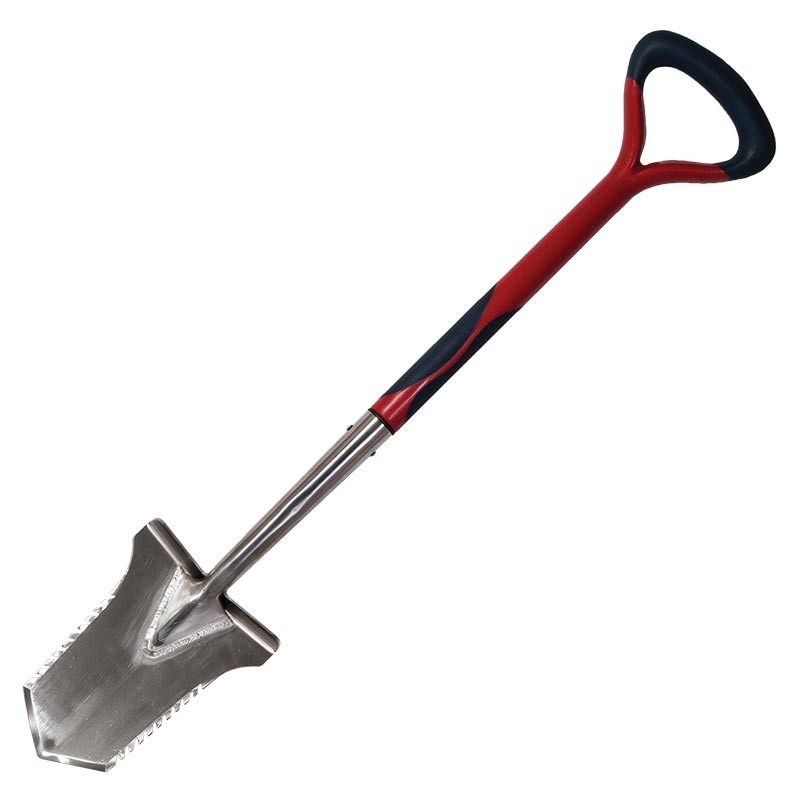
The Evolution Pro Cut
The ultimate accessary for the serious metal detectorist. Super strong, stainless steel specially designed spade.

